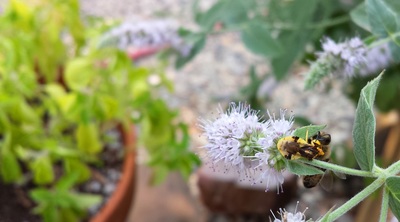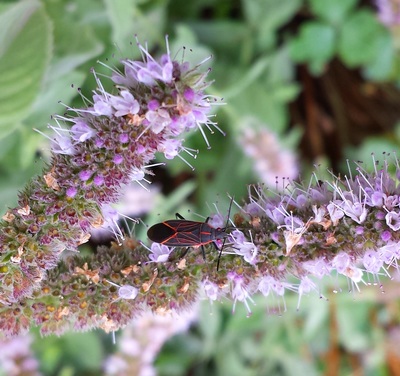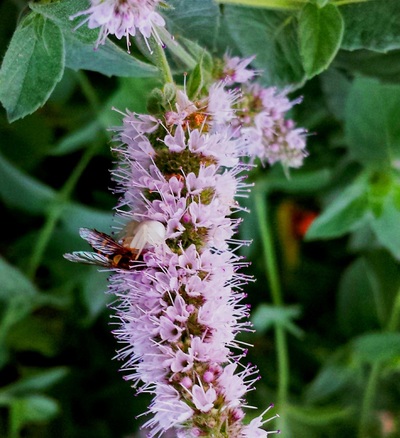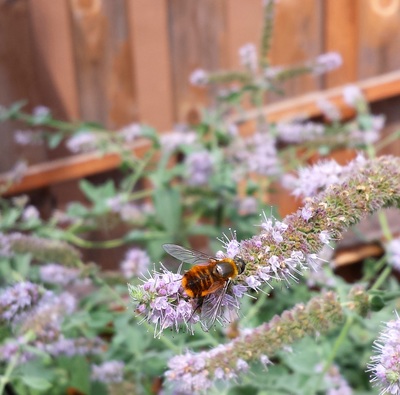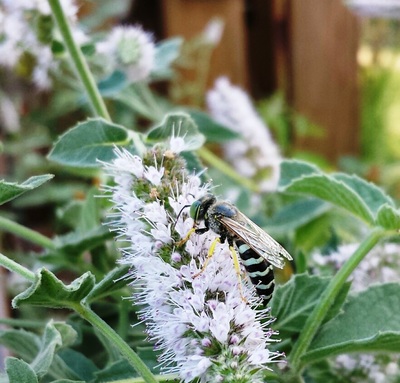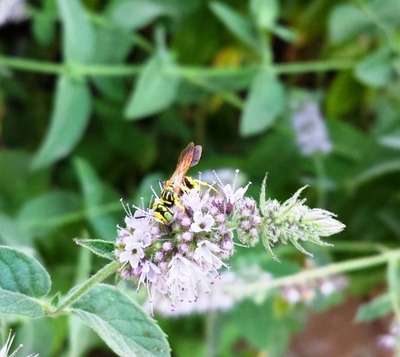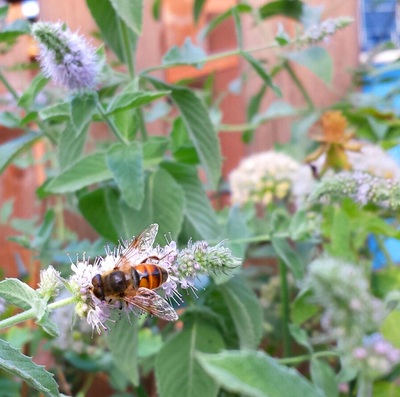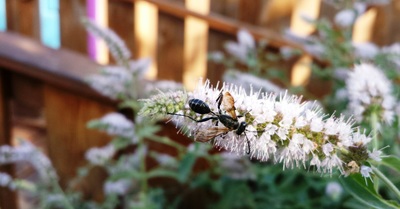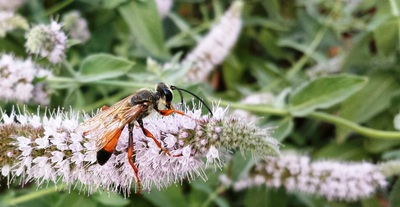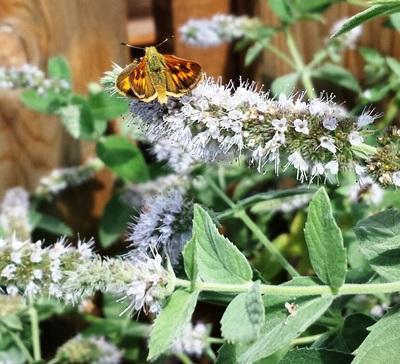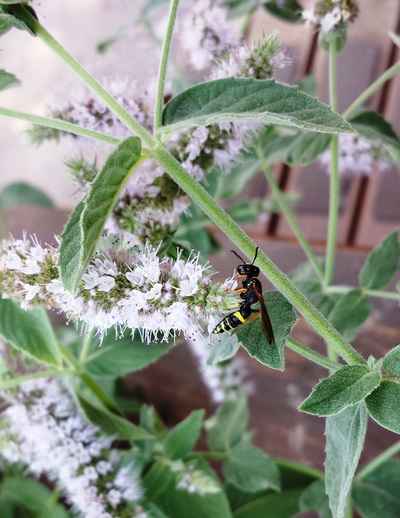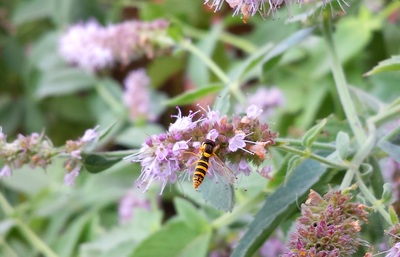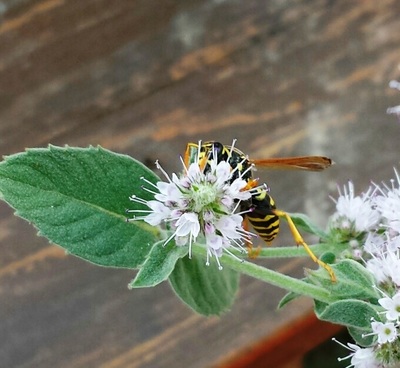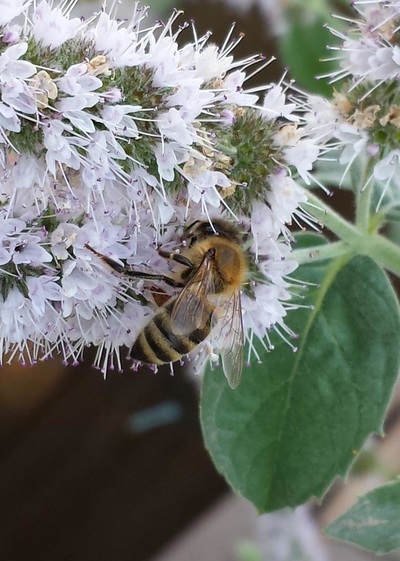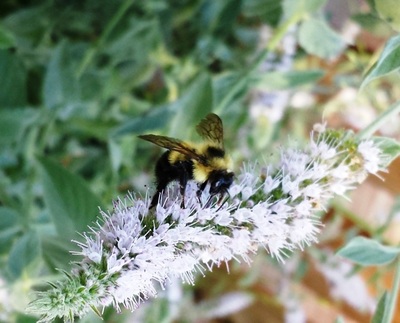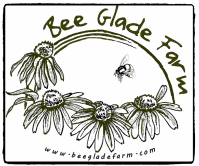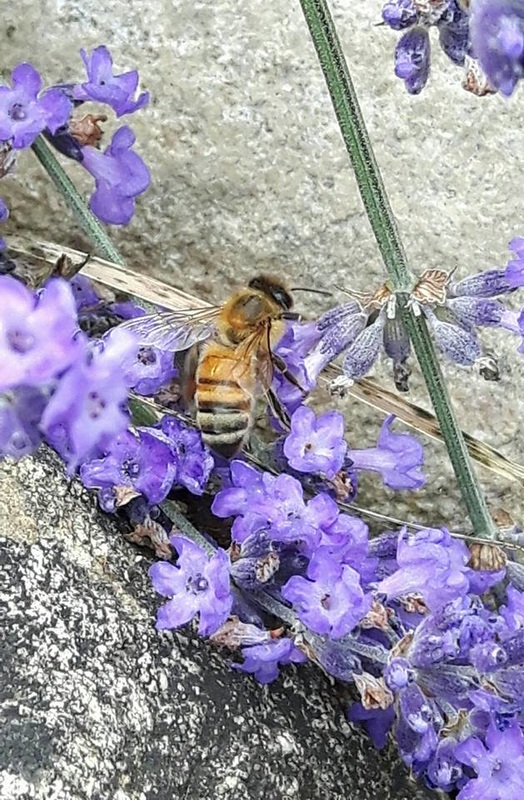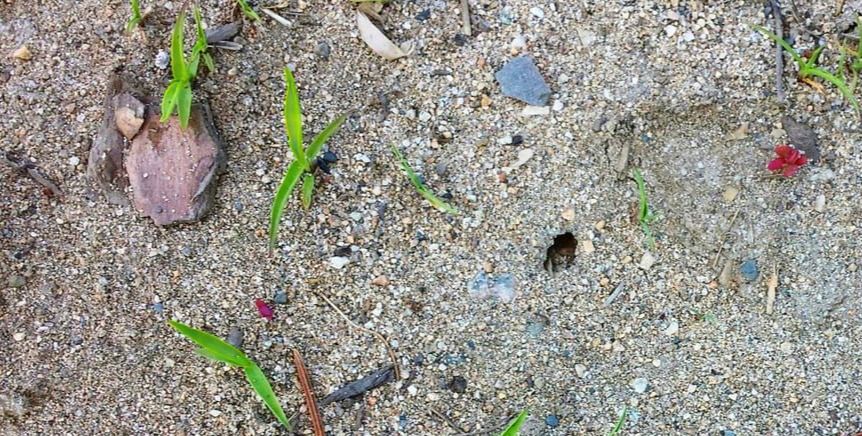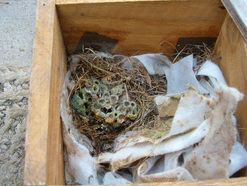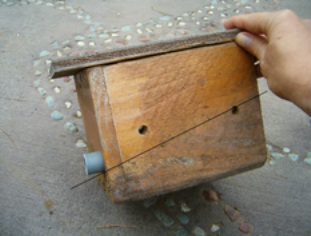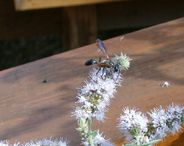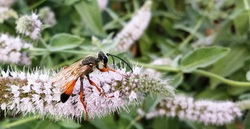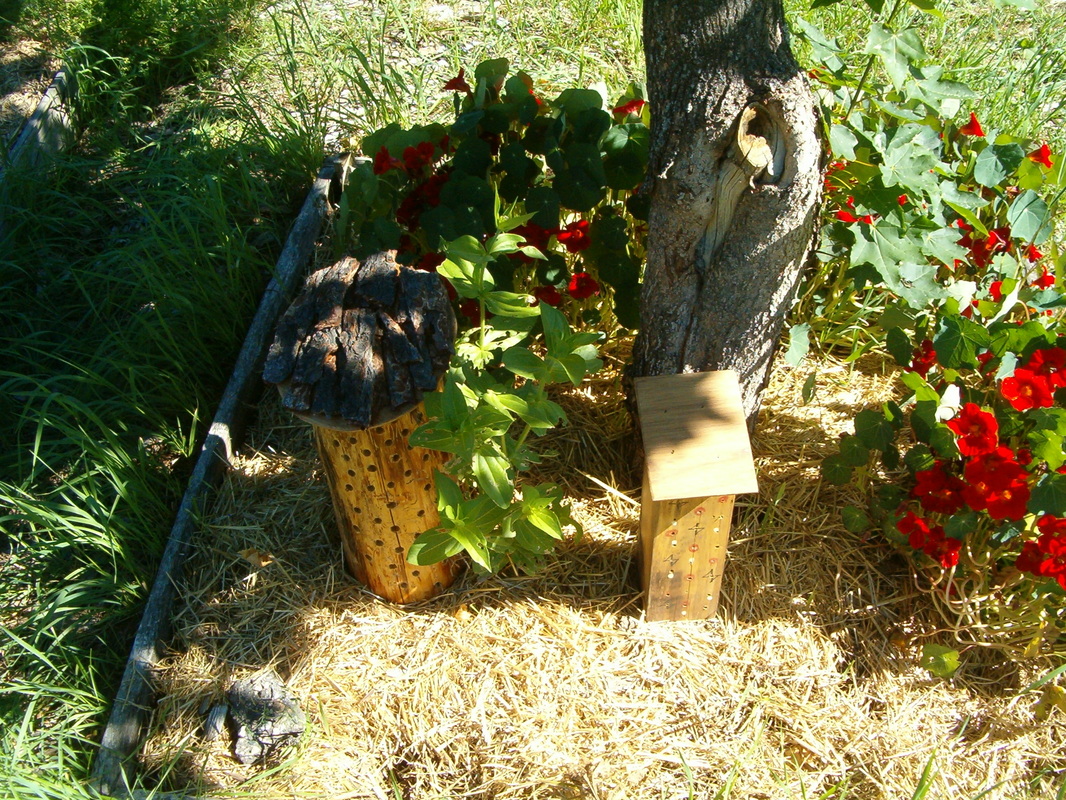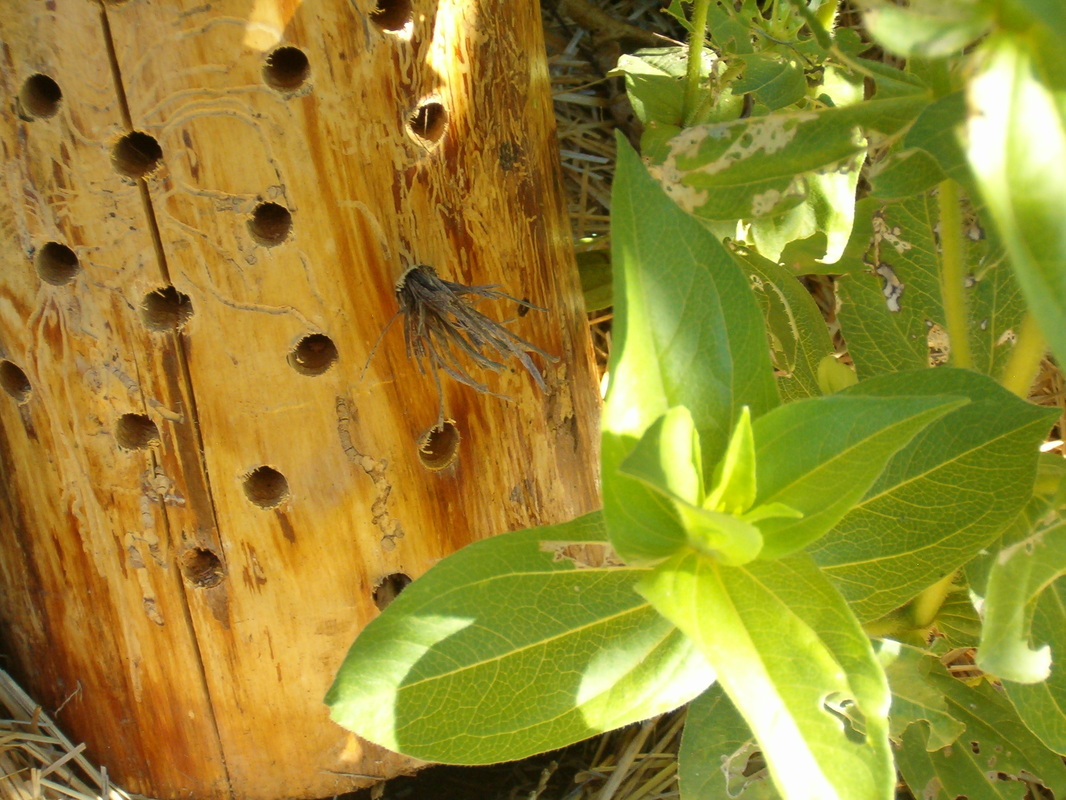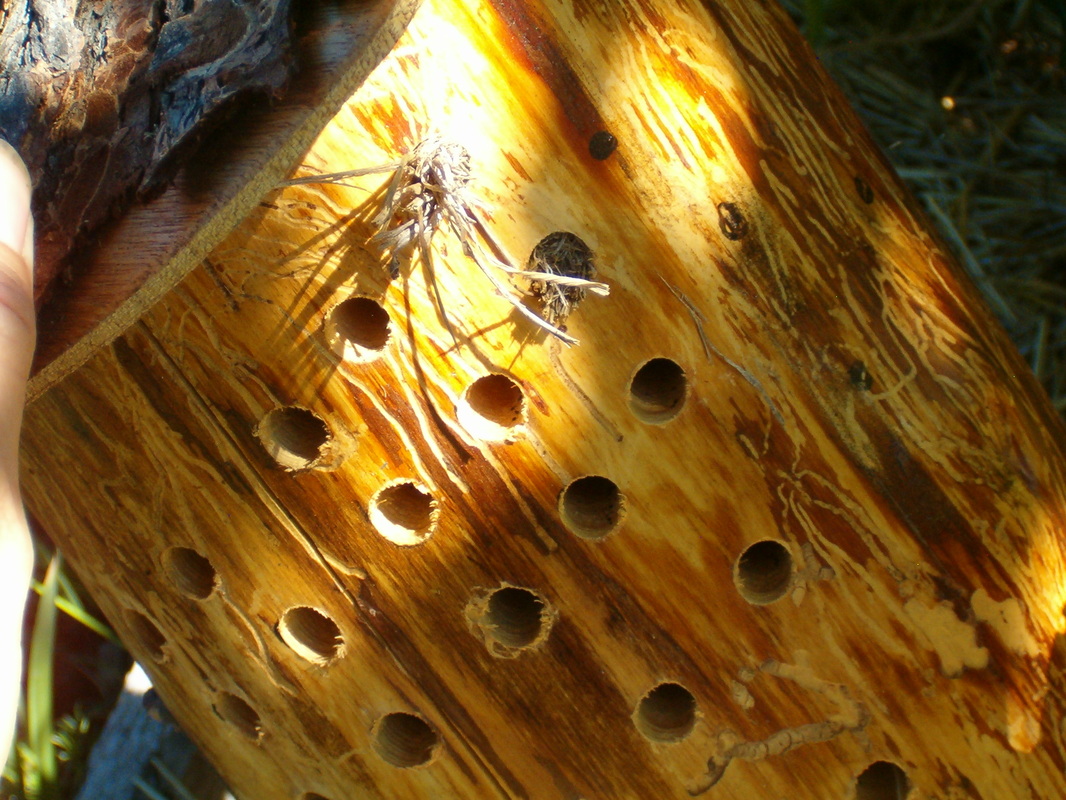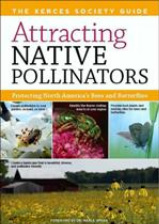Pollinators and other insects attracted to Silver Mint
|
Native pollinators:
With a name like 'Bee Glade Farm', it is often assumed that we keep honey bees, but we don't...
the bees I refer to are the native bees and bumblebees that do the necessary work of pollination.
In regards to the resilience of native bee populations: A friend told me that on her organic farm, her neighbour kept honey bees. When he stopped keeping honey bees, it took 2 to 3 years for the native bee population on her farm to return. She was aware of this, because she had a number of large wild cherry trees on her property. She had barely any fruit on the trees for 2 to 3 years until the native bee population returned in full numbers to pollinate them. However... any pollinators are necessary to life on earth..... A few simple tips to get you started on making a pollinator/insect friendly habitat: plant native plants, lots of herbs (thymes, mints, savoury etc), open pollinated varieties in addition to ornamentals, leave some weeds like dandelions, select plants that bloom very early in the year and very late in the year, plant evening blooming or nocturnal flowers for the moths. Especially no toxic pesticides or herbicides, a water source is essential, and leave some wild undisturbed habitat... |
Grass-carrying thread waisted wasps! (or: Isodontia species)
Links and Organizations (all text from their web sites.)
|
ONE of THE BEST sources for information on North American pollinators: The Xerces Society. Information galore, good fact sheets, explanations on building boxes, tons of information! A most excellent book is available: Attracting Native Pollinators: Protecting North America's Bees and Butterflies. This is their mission statement:
The Xerces Society is a nonprofit organization that protects wildlife through the conservation of invertebrates and their habitat. Established in 1971, the Society is at the forefront of invertebrate protection worldwide, harnessing the knowledge of scientists and the enthusiasm of citizens to implement conservation programs. Butterflies, dragonflies, beetles, worms, starfish, mussels, and crabs are but a few of the millions of invertebrates at the heart of a healthy environment. Invertebrates build the stunning coral reefs of our oceans; they are essential to the reproduction of most flowering plants, including many fruits, vegetables, and nuts; and they are food for birds, fish, and other animals. Yet invertebrate populations are often imperiled by human activities and rarely accounted for in mainstream conservation. The Society uses advocacy, education, and applied research to defend invertebrates. Over the past three decades, we have protected endangered species and their habitats, produced ground-breaking publications on insect conservation, trained thousands of farmers and land managers to protect and manage habitat, and raised awareness about the invertebrates of forests, prairies, deserts, and oceans |
Canadian Pollination Initiative: NSERC-CANPOLIN is a five-year Strategic Network that is addressing the growing problem of pollinator decline in agricultural and natural ecosystems in Canada. NSERC-CANPOLIN offers an exciting and unique approach to pollination research. For the first time, leading experts in entomology, ecology, plant reproductive biology, genomics, prediction and economics have joined forces to explore the full scope of the pollination problem – from pollinator health and conservation to gene flow in plants, the impact of climate change and the economics of pollination.
Pollination Canada: You know about bees and butterflies, but did you know that there are over 1000 species of pollinating insects in Canada? Together they are an indispensable natural resource, and their daily work is essential for over a billion dollars of apples, pears, cucumbers, melons, berries, and many other kinds of Canadian farm produce. These beneficial insects are under pressure from loss of habitat, loss of food sources, disease, and pesticides. As insect populations are threatened, so are the fruit and vegetable produce, and the wild ecosystems that depend on these pollinators.
Bee Diverse: Mason bee, Osmia lignaria, also known as the blue orchard bee, is a friendly and efficient pollinator for fruit such as apple, cherry, almond and blueberry. Mason Bees are an essential part of growing your own local organic produce. Beediverse homes are a great way to encourage pollinators into your garden.
Pollination Canada: You know about bees and butterflies, but did you know that there are over 1000 species of pollinating insects in Canada? Together they are an indispensable natural resource, and their daily work is essential for over a billion dollars of apples, pears, cucumbers, melons, berries, and many other kinds of Canadian farm produce. These beneficial insects are under pressure from loss of habitat, loss of food sources, disease, and pesticides. As insect populations are threatened, so are the fruit and vegetable produce, and the wild ecosystems that depend on these pollinators.
Bee Diverse: Mason bee, Osmia lignaria, also known as the blue orchard bee, is a friendly and efficient pollinator for fruit such as apple, cherry, almond and blueberry. Mason Bees are an essential part of growing your own local organic produce. Beediverse homes are a great way to encourage pollinators into your garden.
